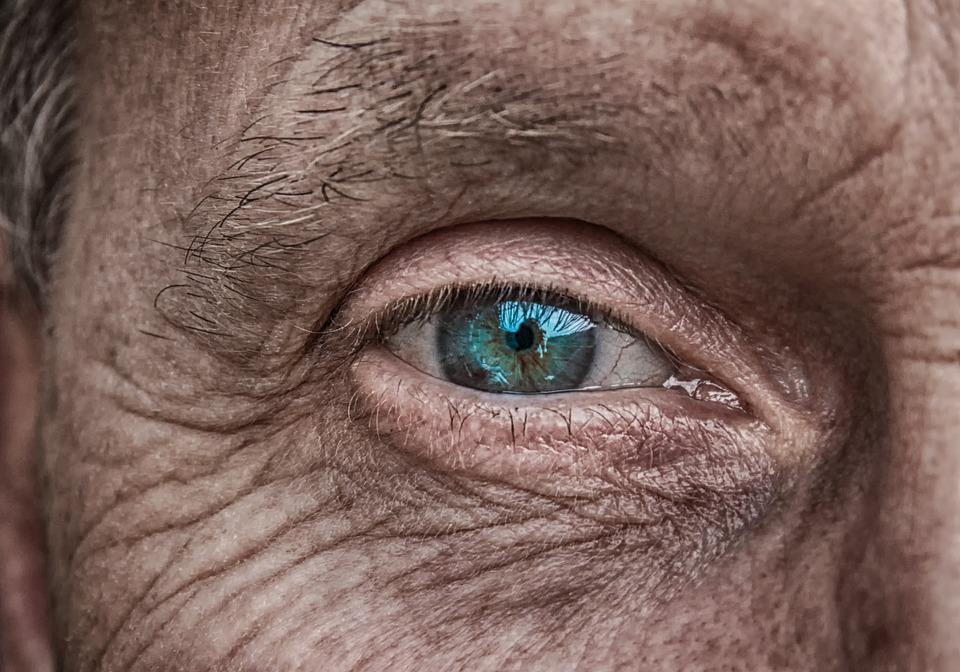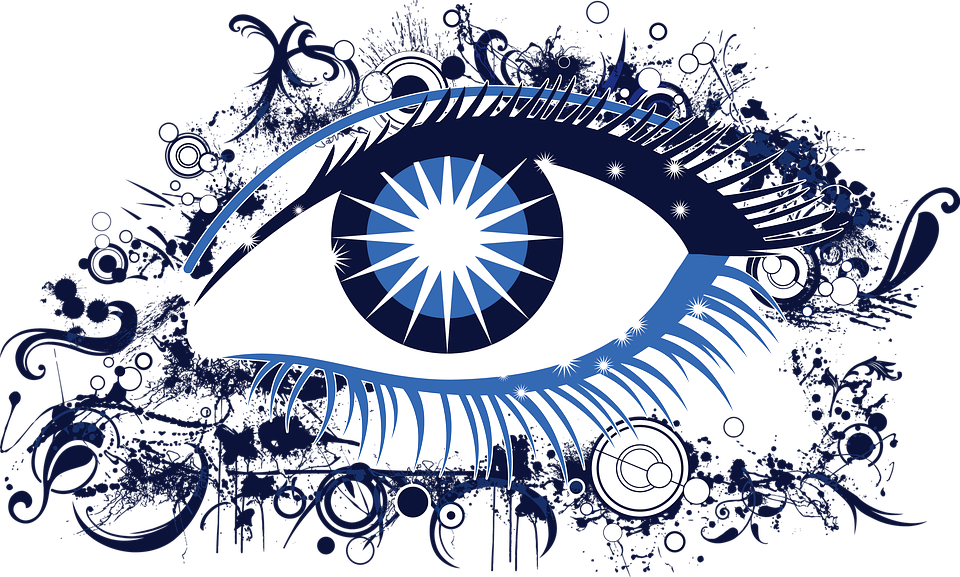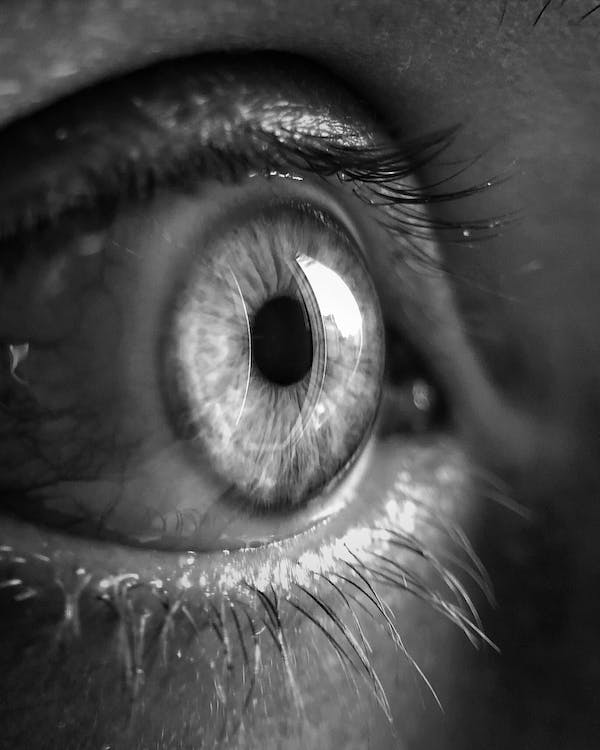Greetings to all and sundry,
The weekend has been beautiful indeed, at least for me I can say it gave me much-needed rest and I feel rejuvenated and ready to face the week ahead and the workload that comes with it. Rest is essential after hard work, it helps us recharge and keep the body in shape so we can continue to do what we do at our utmost best.

I have no doubt that dear readers not only got to rest, after a stressful week but also got to achieve set targets for the weekend and spent good quality time with friends, family, and loved ones. I thus wouldn't have to ask how you are doing because I know that you are quite well already and so we would zoom in to today's health topic where we would talk about the lens within our eyes. I hope you are ready and I do hope you enjoy it as always.
Introduction
The crystalline lens within our n important tool when we talk about our eye's anatomy and physiology and functional vision. It does so much for us that when things go wrong with it it could be quite dire to our vision as well as our entire ocular health. For starters when its clarity is compromised we tend to have the condition cataract and cataract is currently a leading cause of blindness in the developing world, so you can imagine the importance of the lens.
The crystalline lens is positioned just behind the pupil (the hole within the eye which allows light into our eye) and in front of the vitreous, the position is strategic because it allows accommodation through something we call the zonules a thread-like structure that connects to the ciliary body and this connection is what makes accommodation a possibility. When we talk about the accommodation we are talking about the lens being able to change its shape and thus its power to aid us to see clearer near and at far. (Does this make the lens a shapeshifter?)

The lens also has natural properties which add up to the pupillary reaction towards cutting extreme light from getting into the eye to prevent UV radiation from getting to the back of the eye or the retina so the sensitive cells over there that do the phototransduction process for vision do not get damaged. The lens has a part to play in refractive errors, presbyopia, and other ocular conditions including some types of glaucoma and so it is something that ought to be on our radar always.
The lens naturally happens to be in some form of a sac within the eye and this helps protect get and also keep it in position for it to be able to serve its purpose accordingly. Sometimes some things go wrong and the lens gets displaced from its original position or does not end up where it ought to be in the first place, when this happens the lens is said to be displaced and it tends to have its own negative consequences, and so today we are going to learn about how this displacement could impede our vision in different ways.
Lens Displacement
When the lens of the eye gets displaced it may happen posteriorly thus moving more towards the back and into the vitreous, anteriorly thus moving towards the pupil, or getting embedded into the pupil or laterally, either towards the right, left, up, or down. Lens displacement is best observed with the aid of the instrument known as the slit-lamp, with it one could easily tell the displacement type and what other side effects could be going on.
Experts could also do similar observations with the ophthalmoscope or the arclight. Lens displacement may come about due to issues with anatomy and physiology development which is what happens in the cases of ectopia lentis where the lens is displaced in both eyes. It is associated with an autosomal dominant allele and other conditions such as Marfan's syndrome, Homocystinuria, Ehler's Danos Syndrome, Sulphite oxidase deficiency, and the like.
These are however not as common as what happens in traumatic cases where trauma to the eye tends to push the lens out of its place, the condition is thus referred to as traumatic lens displacement. Most often due to the trauma, there are other issues of inflammation such as uveitis that comes along with it and has to be dealt with right away to prevent the possible case of cataract as well as glaucoma from setting in. Then there is the displacement that comes about spontaneously.
This may happen when the zonules tend to spontaneously have an issue or the sack holding the lens ruptures or some underlying condition such as glaucoma, uveitis, cataract, staphyloma, myopia, tumor, etc causes this to happen. In such cases taking a look at the underlying cause is as important as trying to fix the issue at hand. In lens displacement, it may be subluxated or luxated altogether and each may bring its own problems.

When we say the lens is subluxated it means that the displacement wasn't complete, that the lens is moved out of place but not completely, and a part of it is still within the proper space. It may induce astigmatism in the individual suffering from this and can even cause diplopia or double vision in some instances. It could also affect the drainage pathway of the aqueous humor depending on the direction of dislocation and this causes a buildup of tension leading to glaucoma. It is best managed with lenses as surgery tends to be a bit complicated and difficult but it is also a possibility.
In luxated lens, the lens is completely moved out of place and could find itself attached to the pupil, floating through the vitreous or even attaching itself to the retina, all of which have bad outcomes as they all have negative consequences on vision. When it moved such that light passing through the pupil doesn't go through the lens to get to the retina the eye is considered aphakic thus without a lens because the effect of the lens is not available and because the lens offers a lot of dioptric powers for vision to be possible, vision in this eye could be so down that unless an object is just in front of the eye the person cannot see.
This may warrant refraction and dispensing of high plus powered lenses, as high as 12 diopters may be given to enable the person to see objects at far, and in the situation of aphakia, it becomes paramount that the person is given UV protective lenses to help with that lost function of the lens in protecting the retina from UV radiations that may be detrimental to the retinal cells. If possible, surgery may also be performed to place an intraocular lens within the eye, mostly in front of the pupil since the lens sac may already be damaged.
The most common issues with lens displacement whether subluxation or luxation, traumatic, spontaneous, or immune-related are glaucoma and uveitis all of which are sight-threatening conditions that if not dealt with right and with a sense of urgency would result in irreversible loss of vision. And so it becomes important once again that we report any changes in our vision to our Optometrist and not assume it is nothing whiles ensuring that we have a frequent eye examination.
Conclusion
Remember that what you may assume is nothing could be something serious, possibly sight-threatening and you may be setting yourself up to a world of complete darkness if you do not take your ocular health as a serious matter. I have said this a lot of times and I would continue to remind us all that most often than not, vision loss tends to be irreversible and so we have to be more particular about our eyes and sight.

Do not wait it out, visit your Optometrist today, when in doubt always seek professional counsel, have a regular eye examination, wear your glasses, follow medication instructions, and do well to avoid over-the-counter medication without proper care from your caregiver. It is a pleasure serving you once again and I hope you enjoyed the read, your comments, and questions are duly welcomed. Cheers to a great week ahead.
Further Reading
Pérez-Jara, J., Esaá-Caride, N. C., Brage, E., & Martínez de Mandojana, J. (2020). Luxación bilateral de cristalino en octogenaria [Bilateral luxation of crystalline lens in an octogenarian]. Revista espanola de geriatria y gerontologia, 55(5), 309–310. https://doi.org/10.1016/j.regg.2019.10.009.
Schröder, S., Schrecker, J., Daas, L., Eppig, T., & Langenbucher, A. (2018). Impact of intraocular lens displacement on the fixation axis. Journal of the Optical Society of America. A, Optics, image science, and vision, 35(4), 561–566. https://doi.org/10.1364/JOSAA.35.000561.
Guan, J. Y., Ma, Y. C., Zhu, Y. T., Xie, L. L., Aizezi, M., Zhuo, Y. H., & Wumaier, A. (2022). Lens nucleus dislocation in hyper mature cataract: Case report and literature review. Medicine, 101(35), e30428. https://doi.org/10.1097/MD.0000000000030428.
Rankin, J. K., & Pineda, R., 2nd (2013). Traumatic in-the-bag intraocular lens subluxation. International ophthalmology clinics, 53(4), 11–21. https://doi.org/10.1097/IIO.0b013e3182a12a30.
Thanks for your contribution to the STEMsocial community. Feel free to join us on discord to get to know the rest of us!
Please consider delegating to the @stemsocial account (85% of the curation rewards are returned).
Thanks for including @stemsocial as a beneficiary, which gives you stronger support.
Congratulations @nattybongo!
You raised your level and are now a Minnow!
Check out our last posts:
Support the HiveBuzz project. Vote for our proposal!
Thank you
Congratulations on becoming a Minnow @nattybongo 🎉🎉🎉
Thank you very much sir
You're welcome @nattybongo
The HiveBuzz project is not funded anymore since the end of 2022. May I ask you to renew your support to its proposal (https://peakd.com/me/proposals/248)?
Your help would be much appreciated!
You're welcome @nattybongo
The HiveBuzz project is not funded anymore since the end of 2022. May I ask you to renew your support to its proposal (https://peakd.com/me/proposals/248)?
Your help would be much appreciated!